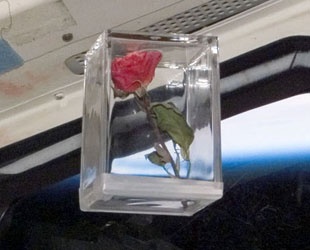Flowers scent is unique in microgravity.
Updated: 2024-02-24
Created: 2018-11-01
Status
International Flavors and Fragrances (IFF) sent roses into space in 2002 and later recreated the measured compounds, which were included in a fragrance "Zen" by Shiseido Cosmetics, but regular production did not follow.1
Applications
- Unique scents for the fragrance industry.
- Enhance food products flavors.
- Connect new population segments to space and microgravity manufacturing.
Why & Solution
New fragrances are much sought after in the competitive perfume industry. Some years ago International Flavors and Fragrances (IFF)
researchers began to wonder, could space-traveling flowers yield something new and exotic? The answer might prove profitable, they figured. IFF is the leading creator and manufacturer of flavors and fragrances used by others to impart or improve flavor or fragrance in a wide variety of consumer products.2
The company expected the experiment to cause a shift in the scent of the rose, because gravity would no longer hold the plant oils in the stem. Even a slight shift would open up thousands of possibilities through combinational chemistry. Low-gravity should affect a flower's smell just as other environmental factors do.3
The rose actually produced fewer volatiles than it did on Earth. But the fragrance that it did generate was critically altered. The flower in space had a more "floral rose aroma," which is aesthetically pleasing.1
- Lockheed Martin created a fragrance called Vector as a joke to capture the smell of space and bring it down to Earth.
- Eau de Space - Decades ago, NASA asked specialists to develop the "smell of space" to help train astronauts before launch into orbit. Kickstarted campaign in 2020 raised $615,000..
- Among the payloads on a Northrop Grumman Cygnus cargo spacecraft launched to the ISS in 2020 were 10 bottles of a face cream by Estée Lauder. The bottles will be photographed in the cupola of the station, with the Earth as a backdrop, and the company used the images in social media campaigns.
Revenue Estimation
Cost Estimation
- First option is to measure the scent and later recreate in large quantity.
- Second option is to manufacture significant quantities of almost complete fragrance, which would be much more expensive, but even more unique.
Earthly Solution Risk
Scent might be imitated eventually, but uniqueness remains.



